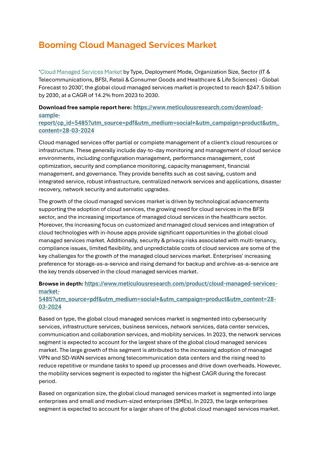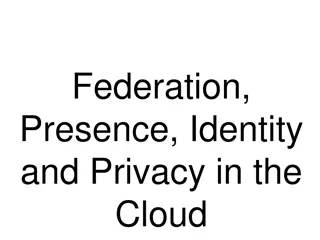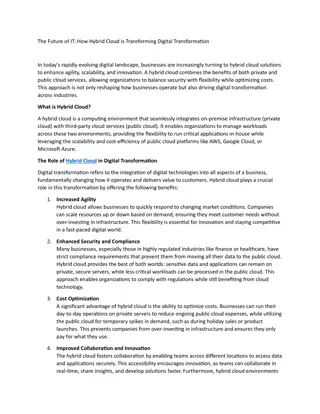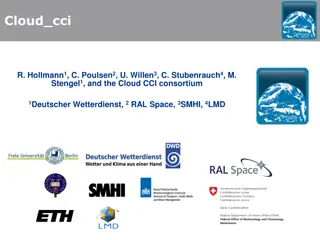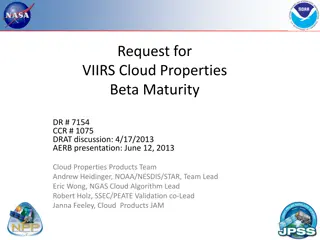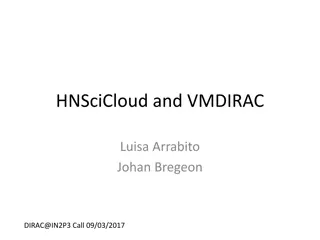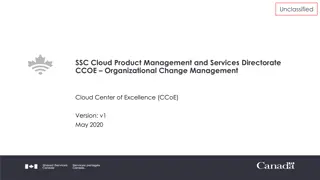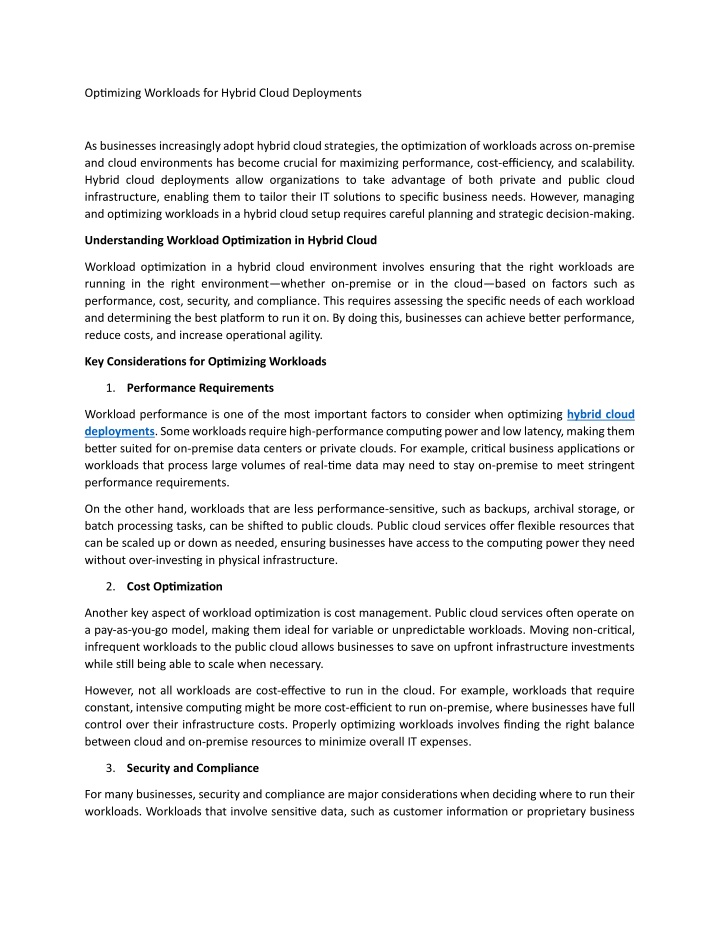
Optimizing Workloads for Hybrid Cloud Deployments
As businesses increasingly adopt hybrid cloud strategies, the optimization of workloads across on-premise and cloud environments has become crucial for maximizing performance, cost-efficiency, and scalability.
Download Presentation

Please find below an Image/Link to download the presentation.
The content on the website is provided AS IS for your information and personal use only. It may not be sold, licensed, or shared on other websites without obtaining consent from the author. If you encounter any issues during the download, it is possible that the publisher has removed the file from their server.
You are allowed to download the files provided on this website for personal or commercial use, subject to the condition that they are used lawfully. All files are the property of their respective owners.
The content on the website is provided AS IS for your information and personal use only. It may not be sold, licensed, or shared on other websites without obtaining consent from the author.
E N D
Presentation Transcript
Optimizing Workloads for Hybrid Cloud Deployments As businesses increasingly adopt hybrid cloud strategies, the optimization of workloads across on-premise and cloud environments has become crucial for maximizing performance, cost-efficiency, and scalability. Hybrid cloud deployments allow organizations to take advantage of both private and public cloud infrastructure, enabling them to tailor their IT solutions to specific business needs. However, managing and optimizing workloads in a hybrid cloud setup requires careful planning and strategic decision-making. Understanding Workload Optimization in Hybrid Cloud Workload optimization in a hybrid cloud environment involves ensuring that the right workloads are running in the right environment whether on-premise or in the cloud based on factors such as performance, cost, security, and compliance. This requires assessing the specific needs of each workload and determining the best platform to run it on. By doing this, businesses can achieve better performance, reduce costs, and increase operational agility. Key Considerations for Optimizing Workloads 1.Performance Requirements Workload performance is one of the most important factors to consider when optimizing hybrid cloud deployments. Some workloads require high-performance computing power and low latency, making them better suited for on-premise data centers or private clouds. For example, critical business applications or workloads that process large volumes of real-time data may need to stay on-premise to meet stringent performance requirements. On the other hand, workloads that are less performance-sensitive, such as backups, archival storage, or batch processing tasks, can be shifted to public clouds. Public cloud services offer flexible resources that can be scaled up or down as needed, ensuring businesses have access to the computing power they need without over-investing in physical infrastructure. 2.Cost Optimization Another key aspect of workload optimization is cost management. Public cloud services often operate on a pay-as-you-go model, making them ideal for variable or unpredictable workloads. Moving non-critical, infrequent workloads to the public cloud allows businesses to save on upfront infrastructure investments while still being able to scale when necessary. However, not all workloads are cost-effective to run in the cloud. For example, workloads that require constant, intensive computing might be more cost-efficient to run on-premise, where businesses have full control over their infrastructure costs. Properly optimizing workloads involves finding the right balance between cloud and on-premise resources to minimize overall IT expenses. 3.Security and Compliance For many businesses, security and compliance are major considerations when deciding where to run their workloads. Workloads that involve sensitive data, such as customer information or proprietary business
data, may need to stay on-premise or in private clouds to meet regulatory compliance and ensure maximum control over security measures. Public clouds, while offering flexibility and scalability, may not always meet the stringent security requirements of highly regulated industries like finance or healthcare. Optimizing workloads involves carefully evaluating the security and compliance needs of each workload and ensuring that sensitive data is kept in environments with the appropriate safeguards. 4.Workload Characteristics Different workloads have varying requirements in terms of storage, computing power, and network bandwidth. Optimizing hybrid cloud deployments involves analyzing the specific characteristics of each workload and assigning them to the most suitable environment. For example, workloads that generate large amounts of data might benefit from being processed and stored on-premise to reduce latency and avoid costly data transfer fees. Conversely, workloads that require temporary computing power, such as running simulations or processing large datasets, might be better suited for the public cloud, where resources can be allocated dynamically without long-term commitment. Best Practices for Workload Optimization in Hybrid Cloud 1.Conduct a Workload Assessment: Before migrating workloads to the cloud, conduct a thorough assessment of each workload s performance, security, and cost requirements. This will help identify which workloads are best suited for on-premise or cloud environments. 2.Leverage Automation Tools: Automating workload management is critical for optimizing hybrid cloud deployments. Use cloud management platforms and orchestration tools to automate workload deployment, monitoring, and scaling. Automation ensures that resources are efficiently allocated and that workloads are adjusted in real-time based on demand. 3.Monitor and Adjust Continuously: Optimization is not a one-time process. Continuously monitor the performance and costs of your workloads and make adjustments as needed. Regular monitoring helps ensure that workloads remain in the most suitable environment and that resources are used efficiently. Conclusion Optimizing workloads for hybrid cloud deployments is essential for businesses looking to improve performance, reduce costs, and ensure security in a flexible, scalable IT environment. By assessing workload characteristics, performance requirements, and security needs, businesses can strategically allocate resources to maximize the benefits of both on-premise and cloud infrastructure. With the right tools and ongoing monitoring, hybrid cloud strategies can empower businesses to adapt to changing demands while maintaining efficiency and agility. Read More: https://techhorizonsolutions.blogspot.com/2024/09/optimizing-workloads-for-hybrid- cloud.html



